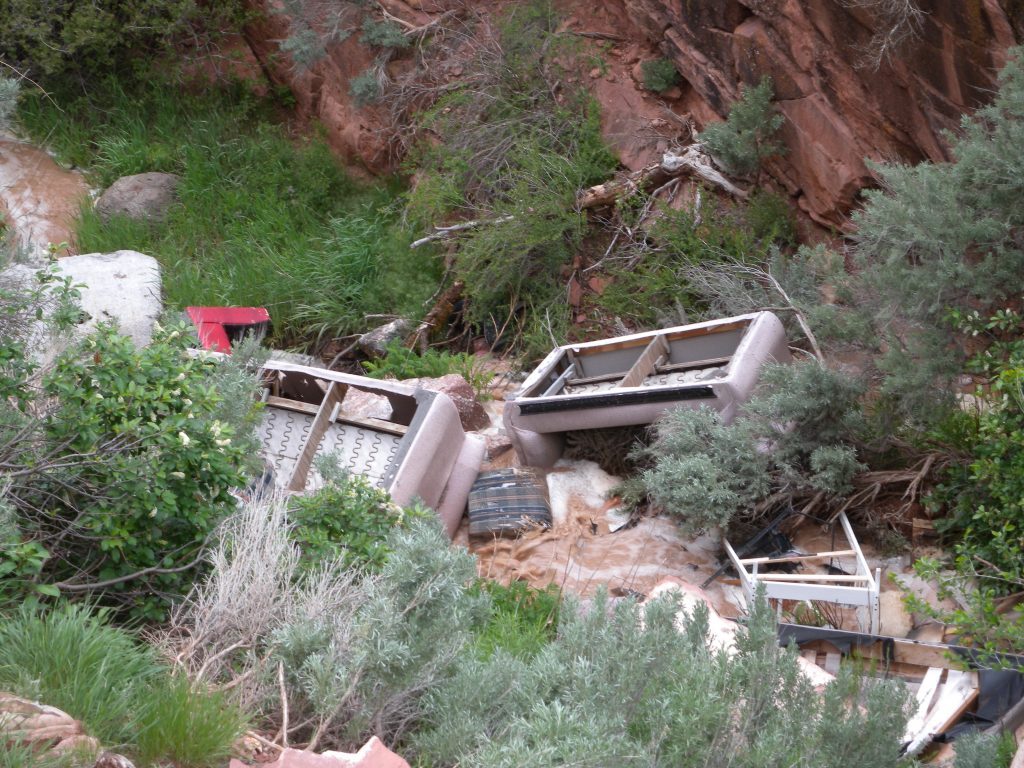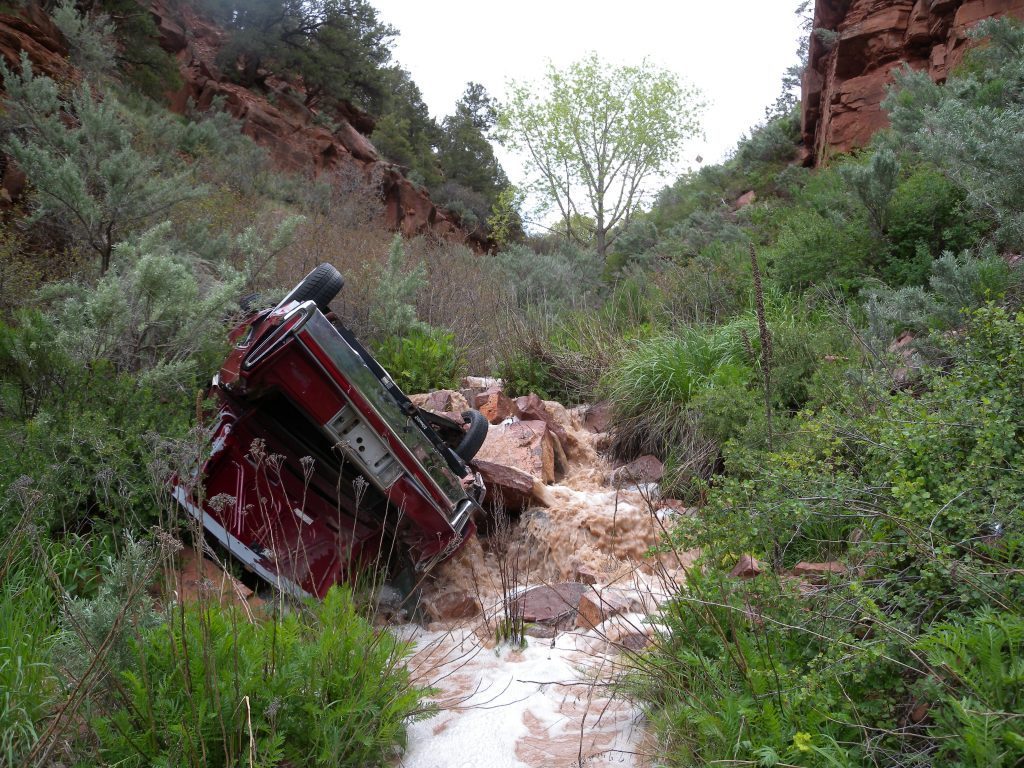
-
Trash piles up in Red Canyon Creek as a result of illegal dumping over the years.
Jonathon Dunn / Contributed
-

-

When Jonathon Dunn moved to the Red Canyon area two decades ago, he was unaware of the illegal dumping that took place in the scenic area south of Glenwood Springs.
Known for its vast views and daunting drops, Dunn recalled asking three people he once saw pushing a vehicle along Red Canyon Road if everything was OK and if they needed any help.
According to Dunn, the three individuals declined any assistance.
“The next time that I came down, that car was in the bottom of the canyon,” Dunn said of the vehicle that still sits there today. “That car is now 90 percent buried by debris.”
“It is not just a question of bringing up a few bags of trash. We are talking about twenty years of accumulated and buried trash that needs to be excavated out now,” Dunn said of the creek in its current state. “There needs to be a thorough cleanup. That waterway needs to be made clean.”

DSCN8880
The seasonal waterway, known informally as Red Canyon Creek, flows hundreds of feet below Red Canyon Road (Garfield County Road 115) between Spring Valley and the Roaring Fork River.
Today, the creek maneuvers through ravaged vehicles, household furniture, electronic appliances, animal carcasses and numerous bags of trash.
That trash has continued to pile up over the years, which has caused mounting concerns for those like Dunn who call Red Canyon home.
“It is not just a question of bringing up a few bags of trash. We are talking about 20 years of accumulated and buried trash that needs to be excavated out now,” Dunn said of the creek in its current state. “There needs to be a thorough cleanup. That waterway needs to be made clean.”
However, residents like Dunn can only do so much in the way of cleanup efforts. They do not own the land or possess the equipment necessary to remove the large items such as pickup trucks.
Additionally, the creek’s location — hundreds of feet below Red Canyon Road — presents access challenges.
“One, it is not our property down there,” Dunn said. “And, two, it is very difficult and could be quite dangerous work.”
Being in a remote area and spanning several miles of land, exactly which governmental entity or private landowner has jurisdictional authority over the various sections of Red Canyon Creek is a bit unclear.
However, Dunn and other concerned Red Canyon residents did not fault anyone other than those who had illegally dumped items over the years. they just want the scenic area cleaned up for obvious safety and aesthetic reasons.
Bureau of Land Management spokesman David Boyd said that illegal dumping was a problem that the BLM was facing all across the west, particularly in areas like Red Canyon where public and private lands neighbor each other.
Boyd said illegal dumping occurs more often in the spring, likely because of remote areas becoming more accessible.
Boyd encouraged the public to contact the BLM with any illegal dumping concerns, and also said that the federal agency often participates with local organizations to complete creek and river cleanups.
“There is quite a new and growing community up here in the Spring Valley area … and we have some very responsible neighbors,” Dunn said, citing one who wanted to bring in a crane to help remove the various forms of pollution.
“We really want to do something about this.”
